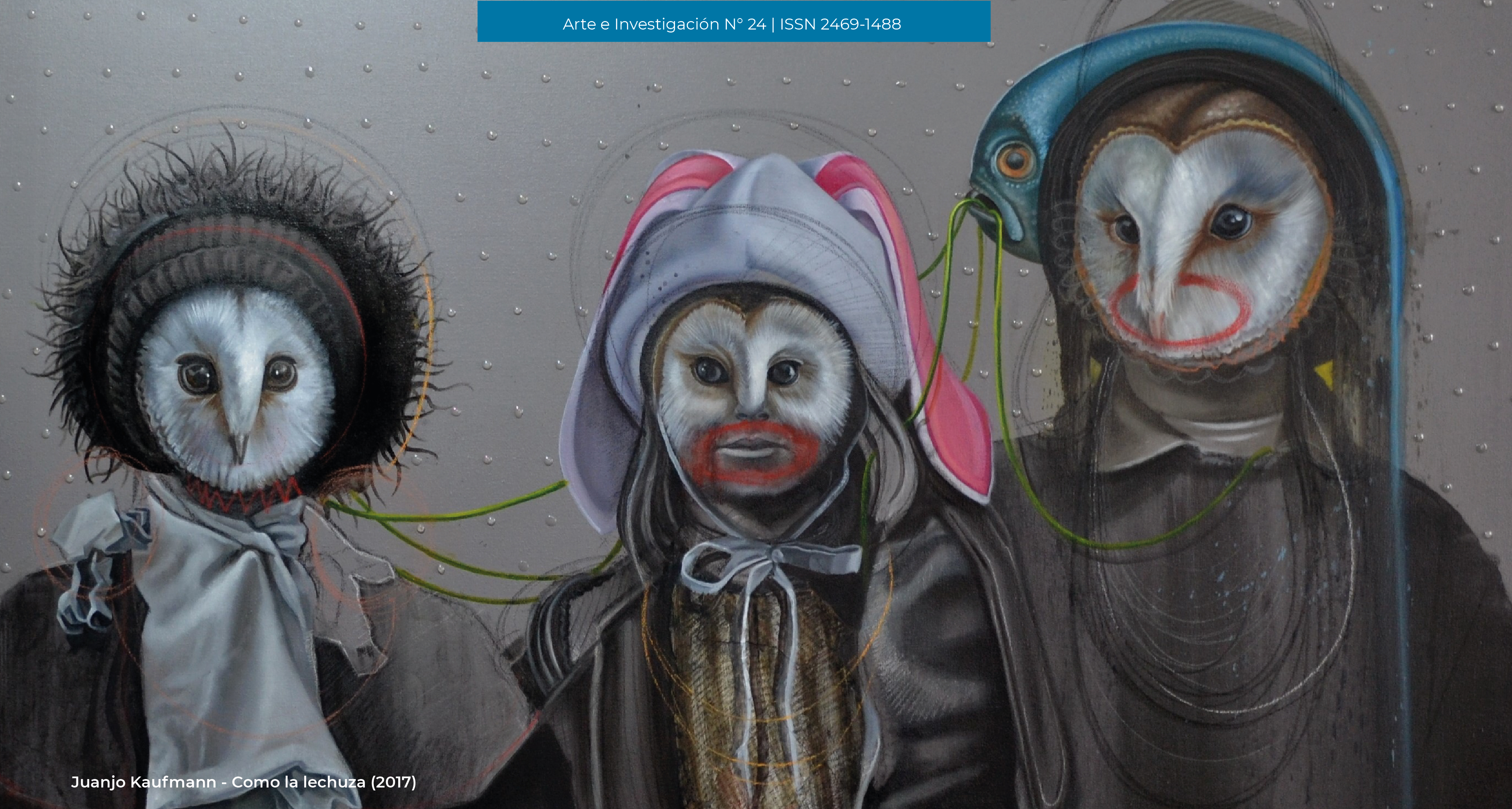A Man Is Whatever Room He’s In
Pete Campbell and The Masculine Domesticity in Mad Men
DOI:
https://doi.org/10.24215/24691488e104Keywords:
Classic Cinema, Gender, Affects, ArchitectureAbstract
This work will try to analyze the character of Pete Campbell in Mad Men as a thresholdcharacter to think about the classic categories in the post-war masculinity. Narratively, spatially and visually the series build him in tension regarding the classic ways of inhabiting the public and the private for masculine characters. When problematizing the notion of domestic masculine space, we will work on the descriptions of the forms and architectonic materialities through which the character transits as potentiators or inhabilitators of affective potencies or expressions of sensibility. The display of antique architectures which dialogue with modern and functional forms, produces spatiotemporal thresholds where history, architecture and cinema enable new ways of looking at gender/genre.Downloads
References
Ahmed, S. (2006). Fenomenología queer. Duke University Press.
Barkman, A. J. (2010). Mad Women: Aristóteles, Segunda ola del feminismo y las mujeres de Mad Men. En Rod Carveth and James B. South (Comp.) Mad men y filosofía: nada es lo que parece. John Wiley & Sons, Inc.
Bruno, G. (2014). Superficie. Materia de estética, materialidad y medios. University of Chicago Press.
Cook, F. (Director) (1956). Patterns. United Artists
French, S. (2011). Les tenés que hacer saber que clase chico sos y ellas sabrán que clase de chica ser: Identidad de Género y Fantasía en Mad Men. En M.Á. Pérez-Gómez (Comp.) Previously On. Estudios interdisciplinarios sobre la ficción televisiva en la Tercera Edad de Oro de la Televisión. Biblioteca de la Facultad de Comunicación de la Universidad de Sevilla.
Goodlad, L. M. E., Kaganovsky, L. y Rushing, R. A. (Eds.). (2013). Mad Men, Loco Mundo: Sexo, Política, Estilo y los años 60. Duke University Press. https://doi.org/10.2307/j.ctv120qtws
Johnson, N. (Director) (1956). The man in the grey flannel suit. 20th Century Fox.
Mulvey, L. (1975). Placer visual y cine narrativo. Screen 16, 3 (otoño).
Preciado, P. (2021). Pornotopia. Arquitectura y sexualidad en Playboy durante la guerra fría. Anagrama.
Sanchez Renieblas, S. (2012). Mujeres en el hogar y mujeres en el lugar de trabajo en Mad Men de Matthew Weiner. Investigaciones Feministas, vol. 3, annual 2012.
Schleier, M. (2009). Cine de rascacielos: arquitectura y género en el cine norteamericano. University of Minnesota Press.
Taylor, M. (2009). El pasado no es lo que solía ser: los complejos hogares de Mad Men. Jump Cut: A Review of Contemporary Media, No. 51, primavera. https://www.ejumpcut.org/archive/jc51.2009/mad-men/text.html
Weiner, M. (Creador) (2007-2015). Mad Men. AMC.
Williams, L. (1991). Cuerpos fílmicos: género, sexo y exceso. Film Quarterly Vol. 44, N° 4, verano.
Wise, R. (Director) (1954). Executive Suite. Metro-Goldwyn-Mayer.
Downloads
Published
How to Cite
Issue
Section
License

This work is licensed under a Creative Commons Attribution-NonCommercial-ShareAlike 4.0 International License.
The acceptance of the manuscript by the magazine means the non-exclusive cession of the property rights of the authors in favour of the editor, who allows the reuse, after publication (post print), under a license Attribution-NonCommercial-NoDerivatives 4.0 International. According to these terms, the material can be copied and redistributed by any means or in any format as long as a) the author and original source of the publication are quoted (magazine and URL of the work), access to the license is provided and whether changes have been made is mentioned; and b) the material is not used for commercial purposes.
The cession of non-exclusive rights means that after the publication (post print) in Arte e Investigación the authors can publish their work in any language, means and format; in such cases it must be mentioned that the material was originally published in this magazine. Such cession also means the authorization of the authors for the work to be collected by SEDICI, the institutional archive of the National University of La Plata, and to be spread in the databases that the editorial team considers appropriate to increase the visibility of the publication and its authors.
Moreover, the magazine encourages the authors to deposit their productions in other institutional and thematic archives under the principle that offering the society the scientific and academic production without any restrictions contributes to a greater exchange of the global knowledge.


































